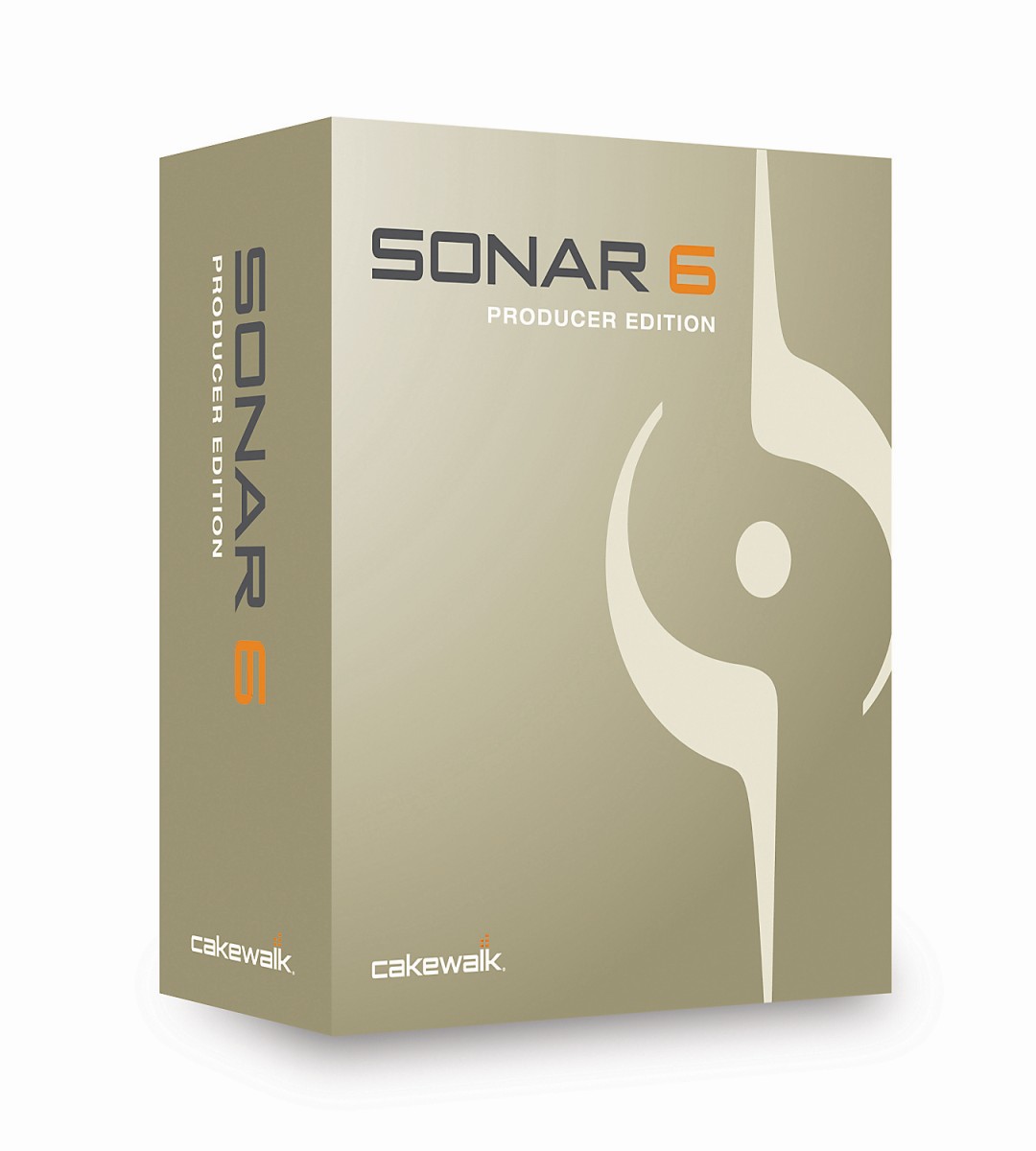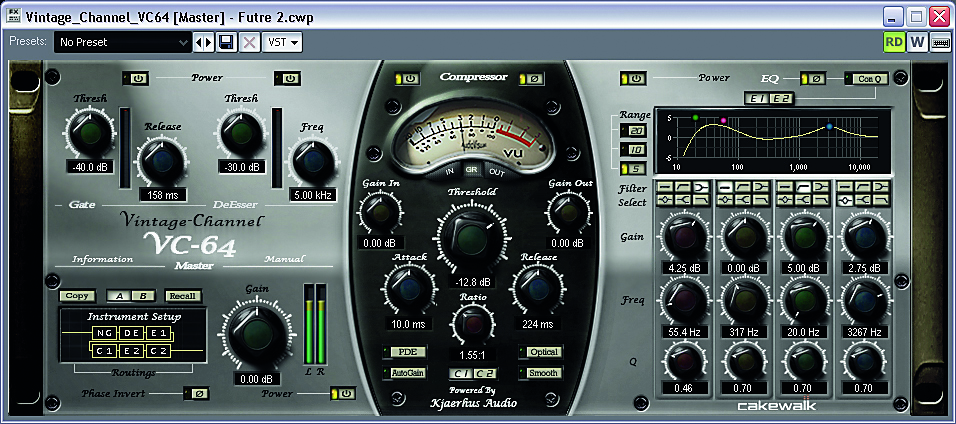MusicRadar Verdict
Another canny Cakewalk update. Sonar 6´s new features have been implemented well and complement those that were already in place. Over to you, Steinberg...
Pros
- +
The most comprehensive version of Sonar yet. Improved Synth Rack. VC-64 Vintage Channel sounds fantastic. Session Drummer now has real, sampled drums Radius timestretching is amazing… …and so is AudioSnap
Cons
- -
Studio Edition a little limited in comparison. No new synths.
MusicRadar's got your back





As predictable as Cakewalk´s updates are, they´re never spurious or superficial. Sonar 6 Producer Edition is a case in point: it features clever new plug-ins, performance enhancements, guest appearances from old friends and some pleasant surprises.
Sonar has a reassuring air of maturity these days - Cakewalk now have many years of experience when it comes to creating MIDI and audio
software. The program is stable, functional and flexible, and certainly no processor hog.
Multi matters
Speaking of CPUs, Cakewalk were among the first developers to offer 64-bit support, and they´re now at the vanguard when it comes to multiprocessor and multicore support. Intel Core 2 Duo owners who buy Sonar 6 will certainly be able to ratchet up the number of plug-ins hosted in their synth and effects racks.
Although it feels thoroughly modern, Sonar still bears a resemblance to the sequencers that came before it (and to some of its competitors). Even a Cakewalk Pro Audio user will be able to get around the interface with ease.
This time, however, Cakewalk are giving users far more control over Sonar´s appearance than ever before. While previously you could specify which toolbars were shown (and where), the toolbars themselves can now be customised to suit your workflow. You can also decide which functions will be displayed in the track view. Don´t know which sort of time ruler to display across the top of the track? No worries - now you can display all of them at once.
Want all the hottest music and gear news, reviews, deals, features and more, direct to your inbox? Sign up here.
And it doesn´t stop there - even the menus are user-configurable. You can hide menu items you rarely use, rename the ones you do and rearrange their layouts.
Another welcome addition is the ability to organise and categorise plug-in menus. Some long-time Cakewalk users have relied on third-party solutions to get their plug-ins into order, but now it´s possible to sort and display them as you see fit. And as with all of Sonar´s customisable functions, new layouts can be saved for instant recall.
We should also say that the overall look of Sonar 6 is a bit more ‘dimensional´. Faders look like faders and knobs seem to pop out of the screen. While there are some who will feel that any attempt to emulate hardware is a touch anachronistic these days, others will celebrate the fact that Sonar now looks far less drab than it once did.
Of course, looks aren´t everything. Power is the name of the DAW game, and Sonar certainly has the goods under the hood. We´re talking 64-bit processing, unlimited MIDI and audio track counts, powerful editing features and plug-ins galore. Our old favourites are still onboard, including Pentagon 1, the Sonitus effects suite and the Lexicon Pantheon reverb plug-in. Roland´s V-Vocal pitch-correction tools and TTS-1 sample-based synthesizer are present and correct too.
Controls
We´re about ready to get into the really cool stuff in Sonar 6, but before we do, we should remind you that we´re looking at the more expensive Producer Edition and that a number of the new features are exclusive to this flagship version.
Some major changes - and we´re not just talking the aforementioned visual ones - are apparent as soon as you start working with the program. You´re immediately struck by the way opening a new instrument in the Synth Rack results in the creation of a combined Synth Track Folder, for example. This makes managing tracks of different sorts a little easier. Ditto for the Logic-style Synth Rack icons that appear in the Rack itself. Like many in Sonar 6, these changes were made at the request of the software´s users. How´s that for support?
Back to the Synth Rack, and we can report that it´s been given a complete overhaul. Sporting a sleek new look, it enables you to easily scroll through presets and freeze tracks, but best of all, it offers a customisable bank of real-time controls that brings your most needed parameters right out front. What´s more, you can group parameters from different plug-ins onto the same knob for layered control.
Also of interest to control freaks is the new Active Controller Technology (ACT). This enables you to assign any hardware MIDI controller to any software parameter. When you switch to another device in Sonar, your control surface is automatically reassigned to its parameters (assuming that they, too, have previously been assigned). Basically, ACT eliminates the need to spend time reassigning and remapping your controller devices - we had it working with ours in no time.
AudioSnap
The single biggest advancement in Sonar 6 has to be the new AudioSnap function. Sonar has always excelled when it comes to tempo-matching and working with loops, but AudioSnap gives it a similar level of power and flexibility as you´ll find in Ableton Live.
A soundbite description of AudioSnap is that it enables you to treat audio in the same way as you do MIDI. You can quantise audio to a given resolution or to a specific groove, and you can use an audio track to define the timing of a MIDI track or even another audio track. Uses range from tightening up live drum tracks to creating an entirely new feel.
AudioSnap works in a similar way to Cubase´s Hit Points. When it´s enabled, the track is ‘sliced´ into individual segments based on the timing of the part and the transients in the recorded material. Markers are added to the track and can be edited and moved around as you see fit. Like most tempo-correction tools, it works best when applied to rhythmic tracks, though with a little effort, we got passable results when we used it on bass recordings and even a picked guitar track.
In addition to beat-matching, the AudioSnap dialog offers a number of other useful correction tools. One of these is Slip Stretch - this enables you to timestretch or compress clips by dragging their edges. Cubase SX users have depended on this for ages, so Sonar fans will be pleased that they now have access to it too.
While we´re on the subject of timestretching, we must bring up Sonar 6´s integrated Radius algorithm (Logic Pro users have been able to access this for a while, but only as an expensive add-on). On loan from iZotope, this offers exceptional sound quality and is a great addition.
Countless other new features are worthy of mention too. There´s the rather splendid transport panel, a new mixer window and a spectrum analyser. You´ll also find mouse wheel support and crash recovery, though the fact that Sonar behaved impeccably throughout the entire review process meant that we weren´t able to test the latter function.
And then there´s the new VC-64 Vintage Channel. This is an awesome, analogue-style compressor/EQ created with the help of Kjaerhus Audio. Bursting with control, it ships with some very usable presets, and coming from the same developers who brought us the Golden Series, it´s no surprise that the VC-64 sounds fantastic. We´re not quite ready to completely ditch our vintage LA-3A, but we´ll certainly be using it a little less often from now on.
Impressed
Cakewalk have released a super-powered version of a product that was already hugely impressive. While some might be disappointed by the lack of anything new on the synthesizer front, it should be noted that Sonar 6 PE still includes all of the stellar instruments from Sonar 5 and that there´s an entirely new version of Session Drummer, complete with real, sampled drum sounds. What´s more, the new Synth Rack makes using what you already have a hell of a lot easier.
Our only real complaint is that Sonar 6 can feel a little cluttered (those who run a dual-monitor setup will be glad of their extra screen space). It can feel like there´s a lot to keep track of, though the new customisation options certainly help.
With some professional DAWs costing more than the computers they run on, Sonar 6 Producer Edition´s £369 price tag seems very reasonable. The program feels like it´s evolving naturally and correctly - existing users will definitely benefit from upgrading - and the extra bells and whistles give it the wow factor that will attract newcomers. Job done, then.
MusicRadar is the number 1 website for music makers of all kinds, be they guitarists, drummers, keyboard players, djs or producers...
GEAR: We help musicians find the best gear with top-ranking gear round-ups and high- quality, authoritative reviews by a wide team of highly experienced experts.
TIPS: We also provide tuition, from bite-sized tips to advanced work-outs and guidance from recognised musicians and stars.
STARS: We talk to musicians and stars about their creative processes, and the nuts and bolts of their gear and technique. We give fans an insight into the actual craft of music making that no other music website can.
